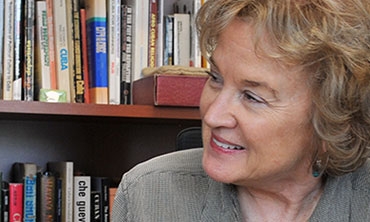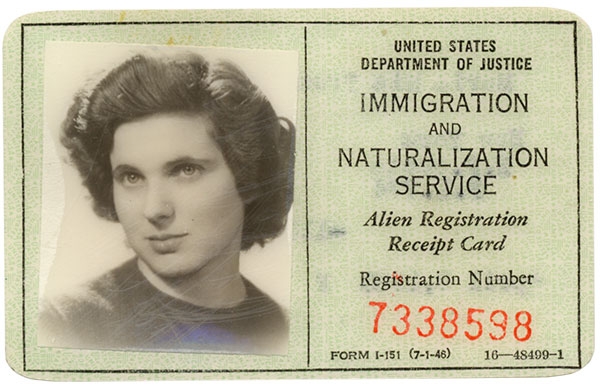World War II displaced Mia (Tlusty) Truskier and 40 million other people. When she came to the United States in 1949, Truskier was a member of the largest refugee population in the world.
Today, the number of refugees exceeds 65 million, according to the United Nations High Commissioner on Refugees, and 70 percent of them are women and children.
Truskier, a Polish Jew who lived from 1920-2014 and was forced to leave her home in the wake of the Nazi invasion, spent much of her life helping those fleeing war and oppression.
“She always said, ‘I know what it’s like to be a refugee,’” Teresa Meade, the Florence B. Sherwood Professor of History and Culture said. “She knew what it was like to have the Gestapo after them.”
Meade’s upcoming book—tentatively titled, “We don’t become refugees by choice”: A Life from Poland to California, 1939 to 2014—is a biography of Truskier.
Truskier was a 19-year-old architecture student in 1939, when her student visa was rescinded and she couldn’t return to school in Switzerland. A member of a prosperous Warsaw family, she was able to escape with her young husband, Jan, his mother and his cousin. Using fake Bulgarian visas purchased on the black market, they fled to Italy in 1940, where they traded their false documents for legitimate 24-hour travel visas.
The plan, Meade explained, was to head to Rome—an open city—and from there go to Brazil. That never happened, and they spent the next nine years living in a “precarious netherworld, passing as Aryan Poles.”
During that time, Truskier helped support her family as a costume designer and craftswoman. She continued to use her talents in the U.S., first in Lincoln, Neb., and later in California, as a store window designer and draftswoman in architecture firms. Her husband also worked as a successful architect.
She first began helping refugees during the Vietnam War, as a resident of Long Beach. Later she and Jan moved to Berkeley, where their sons had gone to college.
“Jan and Mia had lost so many family members in World War II, they wanted to be close to their grandchildren and the family they had left,” Meade said. After they moved to the Bay Area, Mia became involved with the East Bay Sanctuary Covenant (EBSC).
EBSC, started primarily out of the Catholic Church, provides legal and material assistance to refugees seeking asylum. Many of the refugees are from Central America and Haiti, but more recently, EBSC has been helping many people fleeing oppression in Somalia and parts of the Middle East.
“Mia was always an activist, always a volunteer. She used her skill as an artist to support EBSC publicity and fundraising efforts, and she designed posters. She was on the board of trustees until she died,” Meade said. “As a skilled puppeteer, she staged shows for children in low-income schools and community centers. She loved to connect with children in this way.”
Truskier was named Berkeley Woman of Year in 2010 for her work in support of all asylum seekers.
“Mia was someone who saw the refugee. She saw people and she understood that nobody wants to pick up and leave their family and friends. They are forced out,” Meade said. “Nobody becomes a refugee by choice.”
Meade’s work is supported by grants from Union College’s Faculty Development Fund and the Hadassah-Brandeis Institute.


